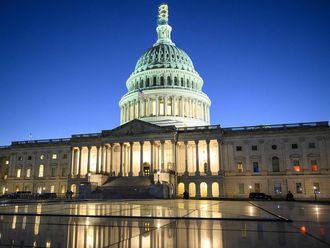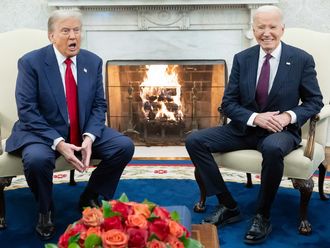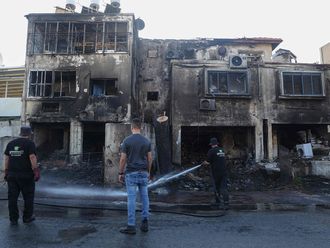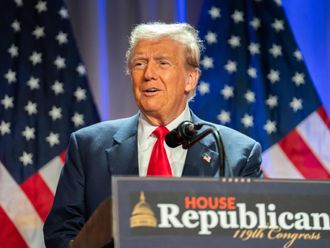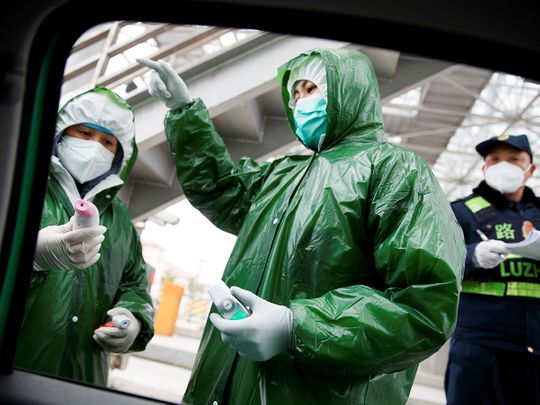
WUHAN, China: In the hospital where Yu Yajie works, nurses, doctors and other medical professionals fighting the new coronavirus have also been fighting dire shortages. They have used tape to patch up battered protective masks, repeatedly reused goggles meant for one-time use and wrapped their shoes in plastic bags for lack of specialized coverings.
Yu is now lying at home, feverish and fearful that she has been infected with the virus. She and other employees at the hospital said a lack of protective wear had left medical workers like her vulnerable in Wuhan, the central Chinese city at the heart of the epidemic that has engulfed this region.
There aren't enough resources
"There are risks — there simply aren't enough resources," Yu, an administrator at Wuhan Central Hospital, said in a brief telephone interview, adding that she was too weak to speak at length.
Chinese medical workers at the forefront of the fight against the coronavirus epidemic are often becoming its victims, partly because of government missteps and logistical hurdles.
After the virus emerged in Wuhan late last year, city leaders played down its risks, so doctors didn't take precautions.
When the outbreak could no longer be ignored, officials imposed a lockdown on Wuhan that expanded across the surrounding Hubei province and then swaths of China.
The vast travel cordons may have slowed the epidemic, but they have also slowed deliveries into Hubei, leaving medical workers short of protective wear.
1,716
number of medical workers infected by the novel coronavirus (Covid-19), as of February 14On Friday, the Chinese government for the first time disclosed the toll the outbreak was taking on hospital employees: 1,716 medical workers had contracted the virus, including 1,502 in Wuhan, and six had died.
Infected
The strength — or vulnerability — of China's medical workers could shape how well the Communist Party weathers its worst political crisis in years.
Li Wenliang, a doctor, died from the coronavirus last week after he had been punished by police for warning friends of the outbreak.
His death ignited fury in China, where he was lionized as a medical martyr to officials who put political control before health.
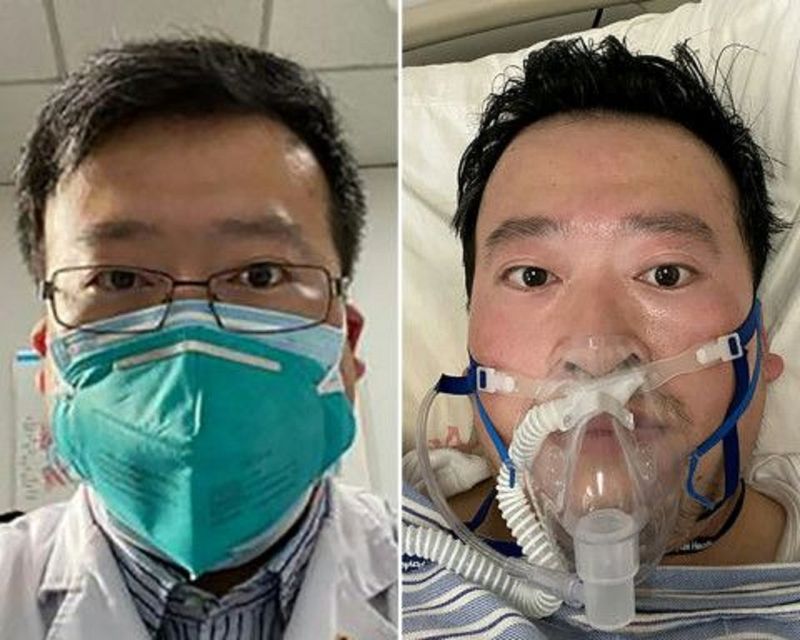
"Of course I'm nervous about getting infected," said Cai Yi, head of the division of pain management at Wuhan Central Hospital, the same hospital where Li had worked. "But if we let ourselves be nervous, then what would happen to the people?"
China's president and Communist Party leader, Xi Jinping, has praised hospital workers in Hubei as heroes and mobilized the country in a "people's war" against the coronavirus. But hospital workers in Wuhan said they often felt frustrated and alone.
Of course I'm nervous about getting infected. But if we let ourselves be nervous, then what would happen to the people?
Some have scrambled to buy protective gear with their own money, begged from friends or relied on donations from other parts of China and abroad.
Others have avoided eating and drinking for long stretches because going to the toilet meant discarding safety gowns that they would not be able to replace. Younger staff are assigned to the more critical cases, with the expectation that if they get sick they would be more likely to recover.
Key questions
Even as Chinese officials disclosed how many medical workers had been sickened and killed by the virus, key questions remain, experts said, including how the workers became infected and whether the rate of transmission was slowing.
Such omissions could make it more difficult for other countries to assess and reduce their own risks.
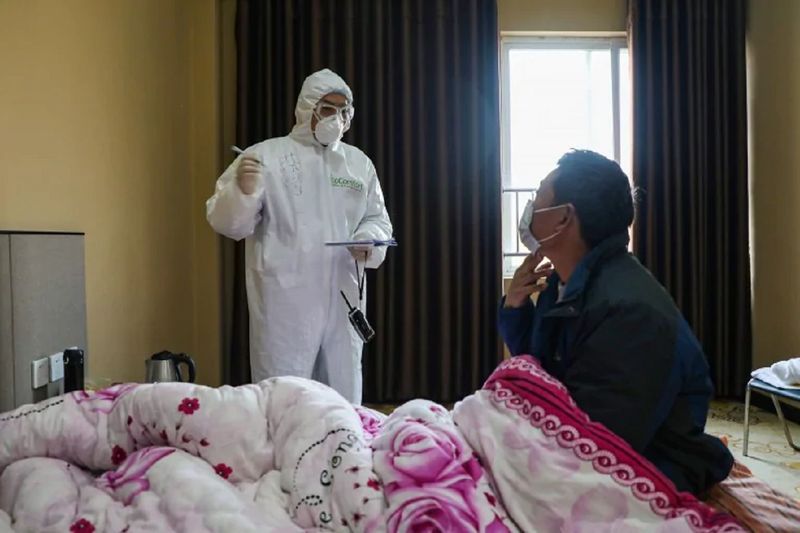
"Clearly, it would have been useful for other parts of China who are beginning to struggle with this outbreak as well for the rest of the world to have these types of data as soon as possible," said Malik Peiris, a virologist at the University of Hong Kong.
Dr. Tedros Adhanom Ghebreyesus, director-general of the World Health Organization, said it is seeking more information about the time period and circumstances surrounding the infections of health care workers.
"This is a critical piece of information because health workers are the glue that holds the health system and outbreak response together," Tedros said.
Out of desperation, they speak out
Doctors and other hospital workers have also come under pressure not to speak out. But many do, out of desperation.
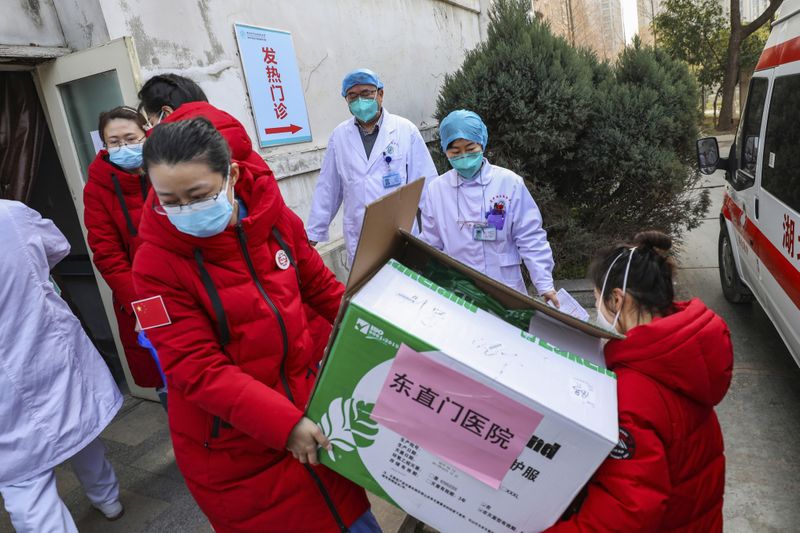
"For the first time, I felt helpless confronting the system," Chang Le, a doctor at Hankou Hospital in Wuhan, said in an online message pleading for more medical masks. His plea was deleted by censors.
"It's only today that I've grasped just how hard it is for us front line medical workers."
The Chinese government has acknowledged problems in medical supplies for Hubei and repeatedly promised to accelerate deliveries.
For the first time, I felt helpless confronting the system. It's only today that I've grasped just how hard it is for us front line medical workers.
Strains in medical supplies may have been unavoidable as the virus spread at a pace that seemed to catch the government off guard.
But the sweeping restrictions across China to contain the virus also slowed production and delivery of much-needed medical equipment, said doctors, factory managers and aid workers.
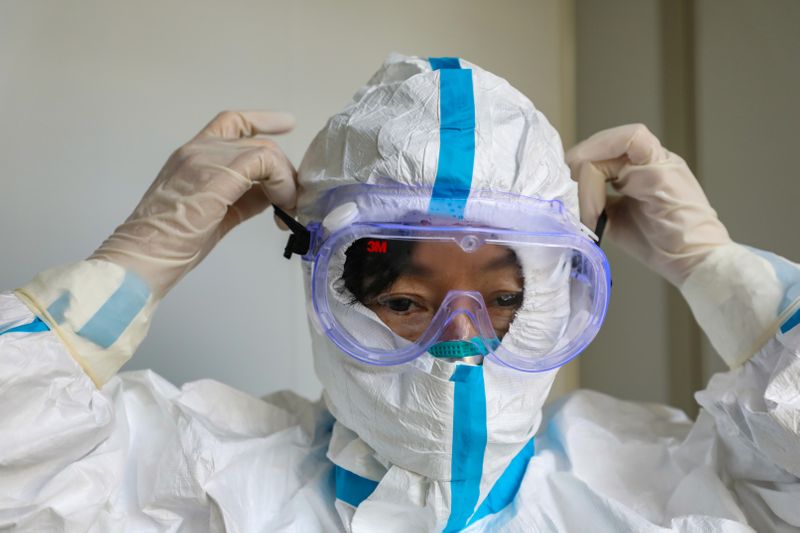
Pervasive road checks and travel restrictions have held up shipments. Factories have faced difficulty increasing production because workers and raw materials have been blocked by lockdowns. Local governments have hoarded supplies.
Bottleneck
China's state-controlled Red Cross has dominated distribution of donations, creating a bottleneck that infuriated hospital employees.
With medical supplies so scarce, many health care workers in Wuhan also said they had to accept substandard gowns, gloves and masks.
Outside the Wuhan Fourth Hospital, medical workers waited near a truck as a delivery man in a full-body medical suit handed down boxes of masks and gowns. One hospital worker explained that the gowns were not of a high enough grade to withstand a viral contagion.
"But this is all we could get," she said. She declined to give her name. "We just have to accept what they send us."
Life has become a scramble, many said: treating patients for much of the day, hunting for protective gear for the rest.
Shortage
The shortage has forced employees, like Chang, from the city's hospitals to appeal for donations of N95 masks — a type of respirator best suited to guarding against viruses — and other personal protective equipment on Chinese social media sites.
Dr. Peng Zhiyong, 53, head of the department of critical care medicine at Wuhan University's Zhongnan Hospital, said in an interview this week that his team was running dangerously low on full-body medical suits and masks.
"We can only get one break during the entire day," he said. "Just one, to drink water and eat. Because if you leave, you don't have any new suits to get back into."
We can only get one break during the entire day. Just one, to drink water and eat. Because if you leave, you don't have any new suits to get back into.
The first time authorities publicly acknowledged a problem with medical worker infections was Jan. 20, when an official expert revealed that 14 had been infected by a single patient. Until the government released details Friday, details were scattershot, emerging in studies and news reports.
Peng and other researchers wrote that 40 health care professionals at his hospital had been infected in January, one-third of the cases included in a study published last week in the Journal of the American Medical Association.
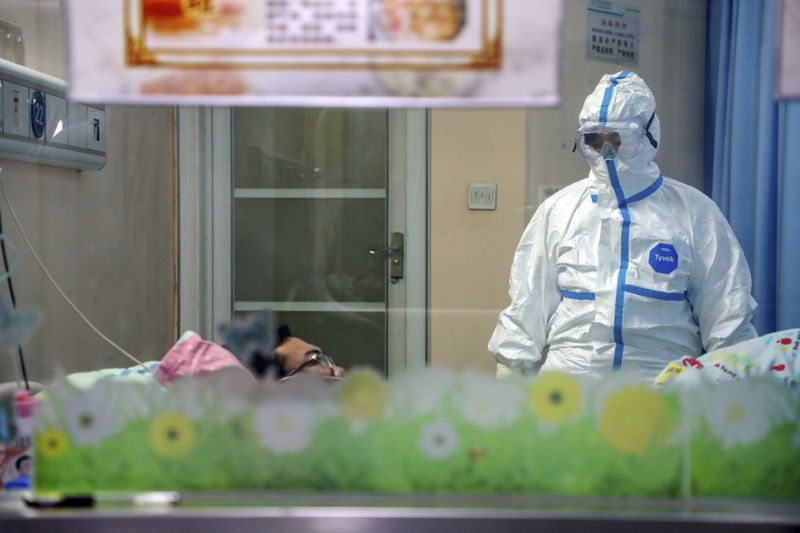
A 61-year-old doctor died nine days after contracting the virus from a patient, according to a report by the newspaper China Philanthropy Times.
Another doctor had started to show symptoms early last month, before medical professionals knew to take extra precautions, according to the state-run Health Times newspaper. He died this past Monday.
During the severe acute respiratory syndrome, or SARS, outbreak of 2002-03, infections of medical workers became a source of anger after the government suppressed information for months.
These workers made up 15% of confirmed cases, according to an expert, Xu Dezhong, quoted by Xinhua, China's official news agency. About 1% of the medical workers infected with SARS died.
Outpouring of donations
The pleas from hospitals across Hubei have inspired an outpouring of donations from Chinese businesses, workers and charities.
But the surge in demand for medical equipment has been hard for suppliers to meet, especially under the lockdown.
Officials in the city of Xiantao in Hubei at first told some companies making protective medical clothing and masks that their factories could not reopen until Feb. 14. An outcry followed, and the city's officials relented Monday, saying that 73 of the companies could resume operations.
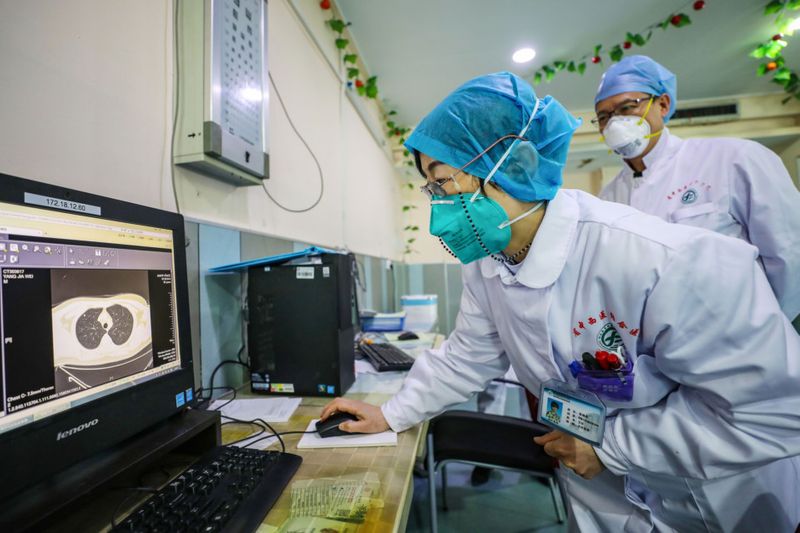
The roads to Hubei are also full of hurdles. In theory, the government has created "green channels" to speed through trucks carrying masks, gowns and equipment. In practice, local officials and police can hold up journeys.
One truck driver recounted being stopped 14 times for body temperature checks when he set out from Wuhan to pick up medical supplies, The Beijing News, a state-run Chinese newspaper, reported.
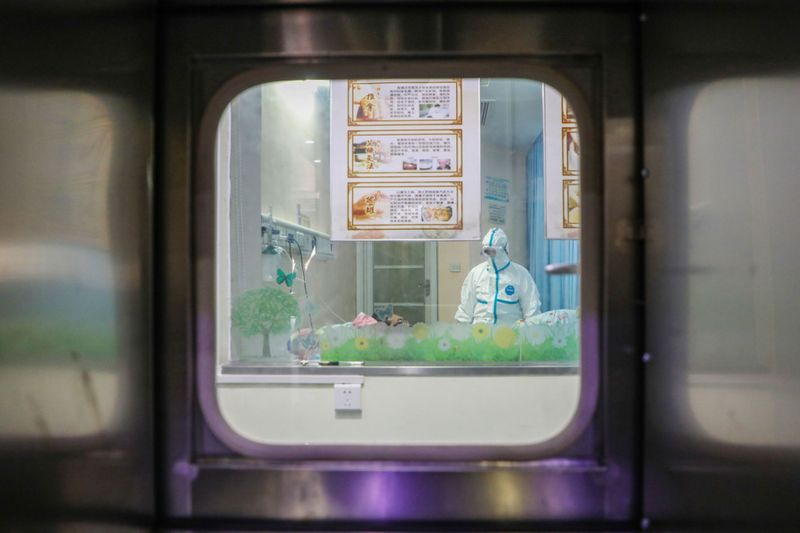
Guo Fei, a 27-year-old entrepreneur who has been helping to buy and deliver supplies to hospitals in Xiaogan, a city in Hubei, said his team was held by police for around eight hours in a neighboring province, Jiangxi, when they went there to pick up an order of hygienic gloves.
Police seemed to be acting for local officials who wanted to retain the supplies for their area, he said.
"I can accept government controls," he said, "but not local protectionism."
Understaffed, overwhelmed
Doctors also criticized bureaucracy for clogging up distribution. Many donations of medical supplies must be funneled through the Red Cross, and the organization — understaffed and overwhelmed — has struggled.
In a furious social media post, Chang, the doctor at Hankou Hospital, described his experience trying to get 10,000 N95 respirator masks from the Red Cross. He was eventually given more than 9,000 masks of inferior quality, he said.
"I just wanted to cry," he said at the end of his video message.
Premier Li Keqiang of China, who oversees a policy team for the crisis, said in early February that "unified national management" would help overcome equipment shortages.
Just a week later, China's Politburo Standing Committee, the Communist Party's top most council, said problems with insufficient beds, medical personnel and other medical resources persisted across Hubei.
According to official data from the province, deliveries of high-quality masks and other items have accelerated in recent days.
The country's health facilities are not only facing an acute shortage of personal protective equipment - they may also be using the wrong gear.
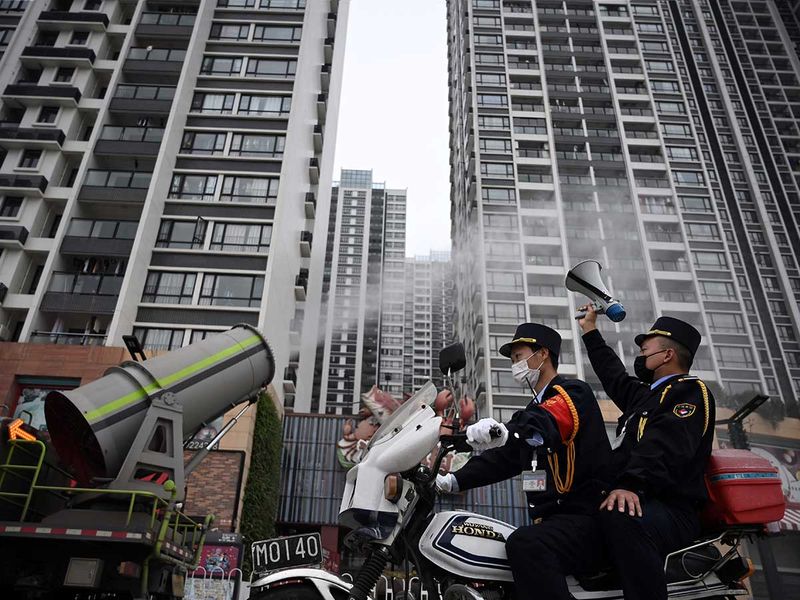
Health workers in China generally have been following the WHO's guidelines to use "standard precautions," which include surgical masks, rather than more expensive N95 masks, to cover their mouths and noses.
The Centers for Disease Control and Prevention, on the other hand, has instructed health care providers to use N95s, which block out much smaller particles than surgical masks do.
Until conditions markedly improve, medical workers will still be forced to make hard adjustments.
Cai, from Wuhan Central Hospital, said he has assigned younger medical workers to treat coronavirus patients to avoid endangering more seasoned employees.
"To be honest, if older doctors get infected, their immune system is much weaker," he said.
Peng of Zhongnan Hospital said more attention had to be paid to the fate of medical workers. "Because when the country doesn't have any more medical workers, then what hope is there left?"Li Wenliang


